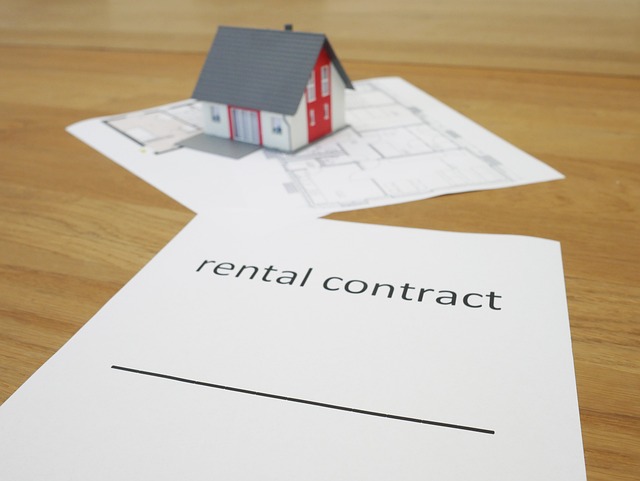Shipping Container Homes in 2025: Key Trends, Options, and Price Insights
Shipping container homes have evolved from experimental housing solutions into mainstream architectural choices. As sustainability becomes a priority and housing costs continue to rise, these modular structures offer an innovative alternative to traditional construction. Understanding the trends, costs, and practical considerations can help you determine whether a container home aligns with your lifestyle and budget in 2025.

The concept of converting shipping containers into livable spaces has gained significant momentum over the past decade. Originally used for transporting goods across oceans, these steel structures are now being repurposed into homes, offices, and even commercial spaces. The appeal lies in their durability, affordability, and potential for customization. As we move through 2025, several key trends are shaping the container home industry, making it more accessible and attractive to a wider audience.
Container homes are no longer limited to minimalist designs or temporary housing. Architects and builders are pushing creative boundaries, combining multiple containers to create spacious, multi-level residences. The structural integrity of shipping containers allows for innovative stacking and arrangement, resulting in unique architectural statements. Modern container homes feature large windows, open floor plans, and high-quality finishes that rival conventional houses.
What Makes Container Homes Eco-Friendly and Sustainable?
One of the most compelling reasons people choose container homes is their environmental impact. By repurposing decommissioned shipping containers, builders reduce the demand for new construction materials and prevent thousands of pounds of steel from ending up in landfills. A single 40-foot container can replace approximately 3,500 kilograms of construction materials.
Beyond recycling, container homes often incorporate additional sustainable features. Many designs include solar panels, rainwater collection systems, and energy-efficient insulation. The compact footprint of container homes naturally encourages minimalist living, which can reduce overall energy consumption. Green roofs, reclaimed wood interiors, and low-VOC paints are common additions that enhance the eco-friendly profile. When properly designed, container homes can achieve net-zero energy consumption, making them an excellent choice for environmentally conscious homeowners.
How Much Does a Container House Cost?
Pricing for container homes varies widely based on size, customization level, location, and whether you purchase a prefabricated unit or undertake a custom build. Understanding the cost breakdown helps set realistic expectations for your project.
A basic, unmodified 20-foot shipping container typically costs between $2,000 and $5,000, while a 40-foot container ranges from $3,500 to $7,000. However, the container itself represents only a fraction of the total investment. Conversion costs include insulation, plumbing, electrical systems, windows, doors, flooring, and interior finishes. A DIY basic conversion might cost $10,000 to $30,000 for a small single-container unit, while professionally built, turnkey container homes range from $50,000 to $150,000 or more for larger, fully customized designs.
Site preparation, foundation work, permits, and utility connections add additional expenses. Depending on your location, these costs can range from $5,000 to $20,000. High-end container homes with luxury finishes, multiple containers, and advanced sustainable features can exceed $200,000.
| Provider/Service Type | Container Size | Cost Estimation |
|---|---|---|
| Alternative Living Spaces | 20-foot basic conversion | $35,000 - $55,000 |
| Custom Container Builders | 40-foot custom design | $75,000 - $120,000 |
| MODS International | Prefab 2-container unit | $95,000 - $140,000 |
| Honomobo | Turnkey multi-container | $150,000 - $250,000 |
| DIY Conversion Kit | Self-build materials | $15,000 - $40,000 |
Prices, rates, or cost estimates mentioned in this article are based on the latest available information but may change over time. Independent research is advised before making financial decisions.
What Are the Key Container Home Trends for 2025?
The container home industry continues to evolve with several notable trends emerging in 2025. Modular expansion systems are gaining popularity, allowing homeowners to start with a single container and add units as their needs grow. This approach provides flexibility and spreads costs over time.
Smart home integration has become standard in new container builds. Automated climate control, security systems, and energy monitoring are seamlessly incorporated into designs. Manufacturers are also focusing on improved insulation technologies, addressing one of the traditional challenges of container living in extreme climates.
Aesthetic diversity is another significant trend. While industrial-chic designs remain popular, many builders now offer options that disguise the container origins entirely, with traditional siding, pitched roofs, and conventional exteriors. Hybrid designs that combine containers with traditional construction materials are creating unique architectural solutions that appeal to broader markets.
Community developments featuring container homes are emerging in urban and rural areas, offering affordable housing solutions with shared amenities. These projects demonstrate the scalability and versatility of container construction for addressing housing shortages.
What Should You Consider Before Building a Container Home?
Before committing to a container home project, several practical considerations require attention. Local building codes and zoning regulations vary significantly, and not all jurisdictions permit container homes as permanent residences. Research your area’s requirements early in the planning process to avoid costly surprises.
Climate considerations are crucial. Containers are metal boxes that conduct heat and cold efficiently, making proper insulation essential. In hot climates, additional cooling strategies may be necessary, while cold regions require robust heating systems and moisture barriers to prevent condensation.
Working with experienced professionals familiar with container construction ensures structural modifications maintain integrity. Cutting openings for windows and doors requires proper reinforcement, and stacking containers demands engineering expertise. While DIY projects are possible, professional guidance often proves valuable for complex builds.
Financing container homes can be more challenging than traditional mortgages, as some lenders view them as non-standard construction. Researching financing options early and working with lenders experienced in alternative housing can streamline the process.
Shipping container homes represent a practical, sustainable, and increasingly sophisticated housing option. With careful planning, realistic budgeting, and attention to design details, container homes can provide comfortable, stylish living spaces that minimize environmental impact. As the industry matures and more builders enter the market, options continue to expand, making 2025 an exciting time to explore this innovative housing solution.




